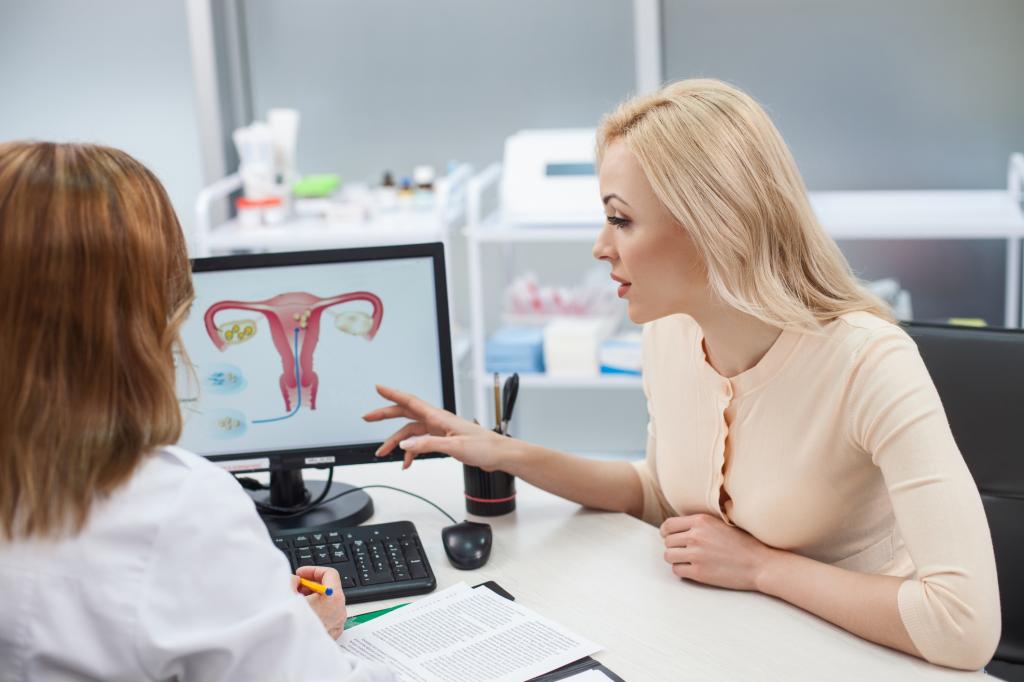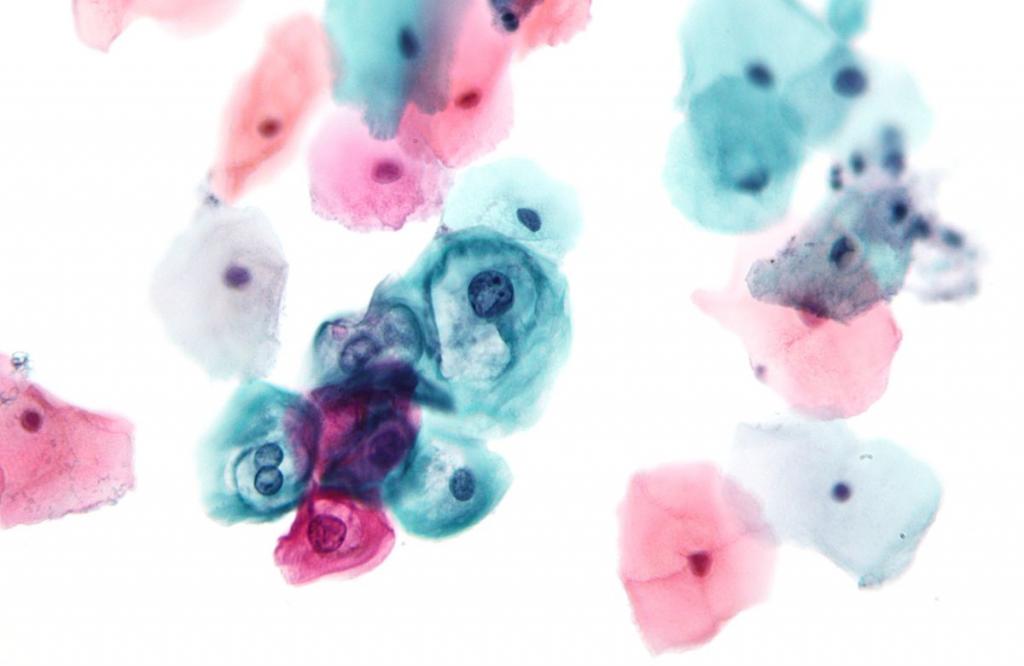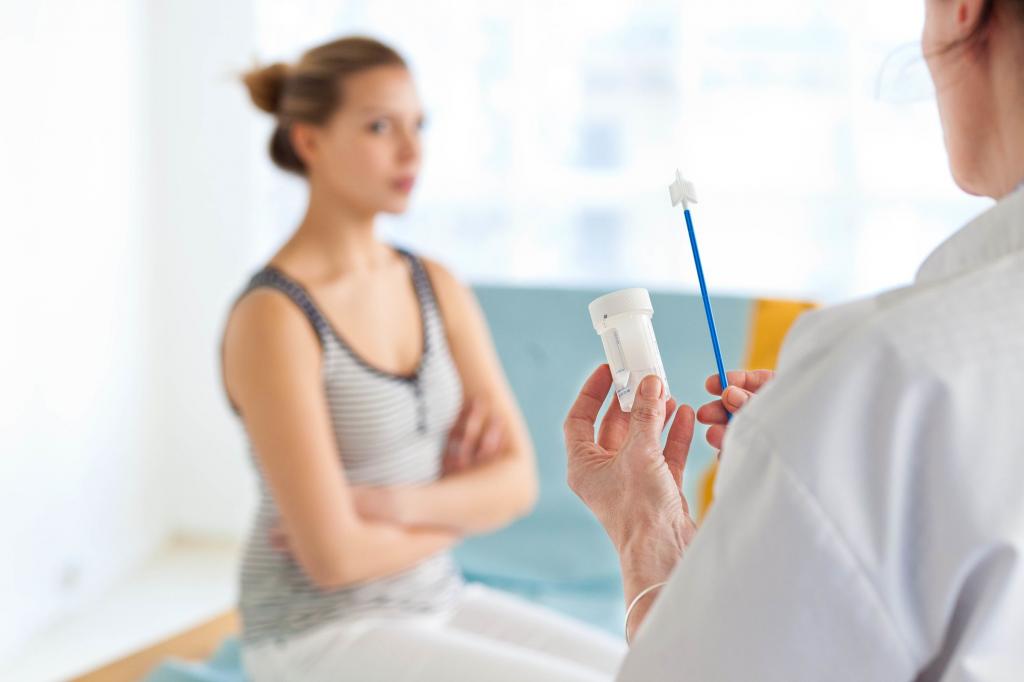The analysis for culture in gynecology is a laboratory microscopic examination that characterizes the microflora present in the cervix, in the vagina and urethra. This study (it is also called a general smear on the flora or bacterioscopy) describes the bacteriological state in the cervix, as well as in the vagina. The biomaterial is applied to glass, it is stained with dyes, which allow more clearly distinguish bacteria under a microscope. The following indicators are evaluated in this case: the number of leukocytes and red blood cells along with the composition of the flora, the presence of trichomonads, gonococcus, fungi and lactobacilli.

Indications
Usually, doctors prescribe an analysis for culture in gynecology in the following cases:
- Against the background of complaints of pain in the lower abdomen, combined with discomfort in the genital area, itching, unusual vaginal discharge, and so on.
- As part of a preventive examination at the gynecologist every six months.
- Woman planning baby birth and pregnancy.
- Long-term therapy with antibiotics, various hormones or cytostatics.
- Factor of change of sexual partner.
The study must be carefully prepared.
Preparation for analysis for sowing in gynecology
Immediately before a visit to the gynecologist, the following requirements should be observed to complete this analysis:
- It is necessary to refrain from sexual intercourse for two days.
- You can not use vaginal products (cream, suppositories) and douching for two days.
- Before analysis for sowing, it is recommended not to urinate for two hours.
It is advisable to give a smear to women immediately after menstruation, on the fourth or fifth day of the cycle.

Procedure
How is the analysis for culture in gynecology? The biomaterial is taken by a gynecologist using a disposable spatula from three points: the urethra, vagina and cervix. When passing the smear, taking the substance can also be carried out with a special brush or through sterile cotton swabs. Before taking the biomaterial, the mucus is necessarily removed, since its presence can give false results. The seeding analysis procedure is usually painless.
On a note
What is a tank. sowing is now known. It is worth noting that the duration of cultivation of it directly depends on the presence of which microscopic organism is necessary to identify within the study. The longest time, as a rule, the crop ripens in the presence of chlamydia, which is fifteen days.
Decoding a smear on the flora in women
Normally, in the taken biomaterial, the rod flora with single leukocytes is determined. Coccal prevalence, as well as a large volume of leukocytes (inflammatory cells) and red blood cells, are present in inflammatory processes. The discovery of trichomonads in biomaterial indicates trichomoniasis, gonococci - about gonorrhea. Often they find filaments of mycelium, that is, candidiasis, which is also called thrush.
Deciphering the smear on the flora in women makes it possible to determine the species and number of bacteria. Thanks to this, it is also possible to establish sensitivity to antibacterial agents.

Squamous epithelium
If, when considering biological material, no more than 10 cells are in the field of view, then everything is fine. This indicator is always present in the smear, as these cells are regularly updated.
If it is present in large numbers, more than ten in the field of view, then such an increase in the number of epithelial cells is a sign of the presence of inflammatory processes in the vagina.
If the squamous epithelium is not detected at all, we can assume a failure of the hormonal background in a woman along with an insufficient amount of estrogen. This is considered an indirect symptom of atrophy of the vaginal mucosa.
White blood cells
The white blood cell count in a smear in women from zero to ten in the field of view is the norm. A single presence of these cells in the vagina, as well as on the surface of the neck, is allowed. A value of more than fifteen in combination with an epithelium of more than ten indicates the presence of an inflammatory process that occurs inside the female organs.

White blood cells present in the cervical canal
In the cervical canal, the presence of these cells in an amount that does not exceed thirty is the norm. If leukocytes are more than thirty in the field of view, and the prismatic epithelium, in turn, is more than ten, this is a sign of the appearance of inflammation within the cervical canal.
What else can an analysis for culture in gynecology reveal?
Staphylococcus aureus
Normally, the complete absence of extraneous flora is considered a sign of a high degree of purity of female organs. If less than ten conditionally pathogenic extraneous microorganisms are found, then this is quite acceptable, but only if there are zero signs of inflammation.
When the indicator of Staphylococcus aureus and leukocytes is more than fifteen, this indicates the presence of a large number of cocci, leukocytes and inflammatory cells. Moreover, in this case we are talking about purulent processes in the vagina, as well as in the cervical canal.
Sticks
If there are no these elements in the flora, then this is considered a sign of a severe violation in the general condition of the vagina, which will be expressed by inflammation in combination with the displacement of lactobacilli. It is worth noting that ninety-five percent of all bacteria normally should be sticks.

Atypical cells
Normally, these should not be detected. Their presence speaks of gardrenellosis, that is, the development of bacterial vaginosis. As a rule, the presence of an excessive amount of gardnerella appears in women with an unpleasant odor coming from the vagina, which looks like the smell of spoiled fish.
Candida
Yeast mushrooms also should in no case be present in the healthy microflora of the vagina. Their presence is a manifestation of thrush, as well as a concomitant signal for various inflammatory processes that occur in the vagina. Candida is found as a conditional pathogenic flora, they often accompany all kinds of viral infections of the vagina and neck.
Trichomonas
Normally, it should not be detected. If it is still found in the smear in any quantity, then this is considered laboratory confirmation of the development of trichomoniasis. In such a situation, specific drug therapy is required, including a sexual partner.
Gonococci
Normally, these should not be detected. Found in a smear in any quantity, they are considered laboratory confirmation of the occurrence of gonorrhea. Antibacterial therapy is needed, including a sexual partner.

E. coli - what does it mean?
E. coli in a smear in women should not be normal. If present, it can act as a component of the conditional pathogenic flora, entering the genitals from the intestines. In the presence of a significant number of leukocytes and in the absence of other infections, the stick in the smear is considered the causative agent of inflammatory processes.
Pregnancy swab
During the period of gestation, women take a smear on the microflora from the urogenital tract repeatedly, because any inflammatory processes can affect the health of the child. The study of the flora is carried out by studying the biomaterial, which is taken from three places: the vaginal mucosa, cervical canal and urethra.
The genital external organs, the cervix and the woman’s vagina serve as the birth canal through which the fetus passes. If the inflammatory process is established in the smear, there is a risk of infection of the baby during childbirth, along with the colonization of the intestines and skin with pathological microflora and the occurrence of various diseases.
In the presence of an unfavorable test result for sowing during pregnancy (in gynecology it is a common type of study) in the first two trimesters, the probability of developing infection of the membranes and water is high (the fact is that the pathogenic flora easily penetrates the uterine cavity through the cervical canal). Damage to the placenta and the appearance of fetal infections are not excluded. As a result of all this, pregnancy can end with a spontaneous miscarriage, the onset of premature birth. In addition, the mechanism of water formation (low water) may be impaired. There is also a risk of fetoplacental insufficiency and intrauterine growth retardation.
In addition, the pathological microflora of the reproductive ducts in women has an effect on the general nature of the postpartum period. The risks of developing purulent and septic complications increase (suppuration of the perineal sutures and the appearance of endometritis and sepsis are possible). Taking a control analysis allows you to evaluate the effectiveness of the therapy.
A bad smear in the last trimester is extremely dangerous infection of the membranes and its early rupture, which leads to premature birth, and in addition to infection of the fetus. In addition, colpitis in the last period of pregnancy, the birth canal loosens, they can swell and are easily injured, which leads to numerous injuries of the perineum, neck and vagina.
Treating pregnant women with a bad smear
With the pathological result of the analysis for culture in gynecology, treatment is prescribed. During gestation, local therapy is preferred, which reduces the likelihood of a negative effect of medications on the fetus. Treatment directly depends on the established pathogen and proceeds, as a rule, in two stages. The first involves the appointment of etiotropic therapy, which is aimed at eliminating the causes of a pathogenic smear, and the second aims to restore normal vaginal microflora.

If trichomonads are detected in the smear in the initial trimester, women are prescribed douching using solutions such as Furacilin and potassium permanganate. Herbs are also suitable. From the second trimester, intravaginal administration of suppositories containing metronidazole is required (these are the preparations "Terzhinan", "Klion-D"). Oral use of drugs that include this therapeutic component is permitted in the last gestation period (for example, Trichopolum or Ornidazole).
In the presence of early pregnancy, bacterial vaginosis is treated with tampons containing clindamycin; in the second trimester of pregnancy, women are prescribed Tinidazole suppositories. If gonorrhea is detected, antibiotic therapy is indicated, belonging to the cephalosporin series (Cefixime or Ceftriaxone).
Treatment of thrush includes the introduction of suppositories with antifungal activity (we are talking about Gino-Pevaril, Clotrimazole, Pimafucin). In the late term they drink fluconazole tablets. The second stage of therapy includes the appointment of probiotics by the intravaginal method (suppositories, as well as tampons, for example Bifidumbacterin, Lactobacterin, Apilak or Bifidin). The duration of therapy is from ten to fourteen days.
Thus, we figured out what sowing in gynecology is. A smear on diseases of the urogenital sphere is one of the most common, and at the same time informative research methods in modern medicine. Thanks to him, you can not only detect banal inflammation, but also prevent the development of all kinds of oncological diseases. Despite the reliability, and in addition, the availability of the technique, not all women realize the need for a regular visit to the gynecologist and take appropriate tests and, unfortunately, turn to the doctor only in extremely neglected cases.